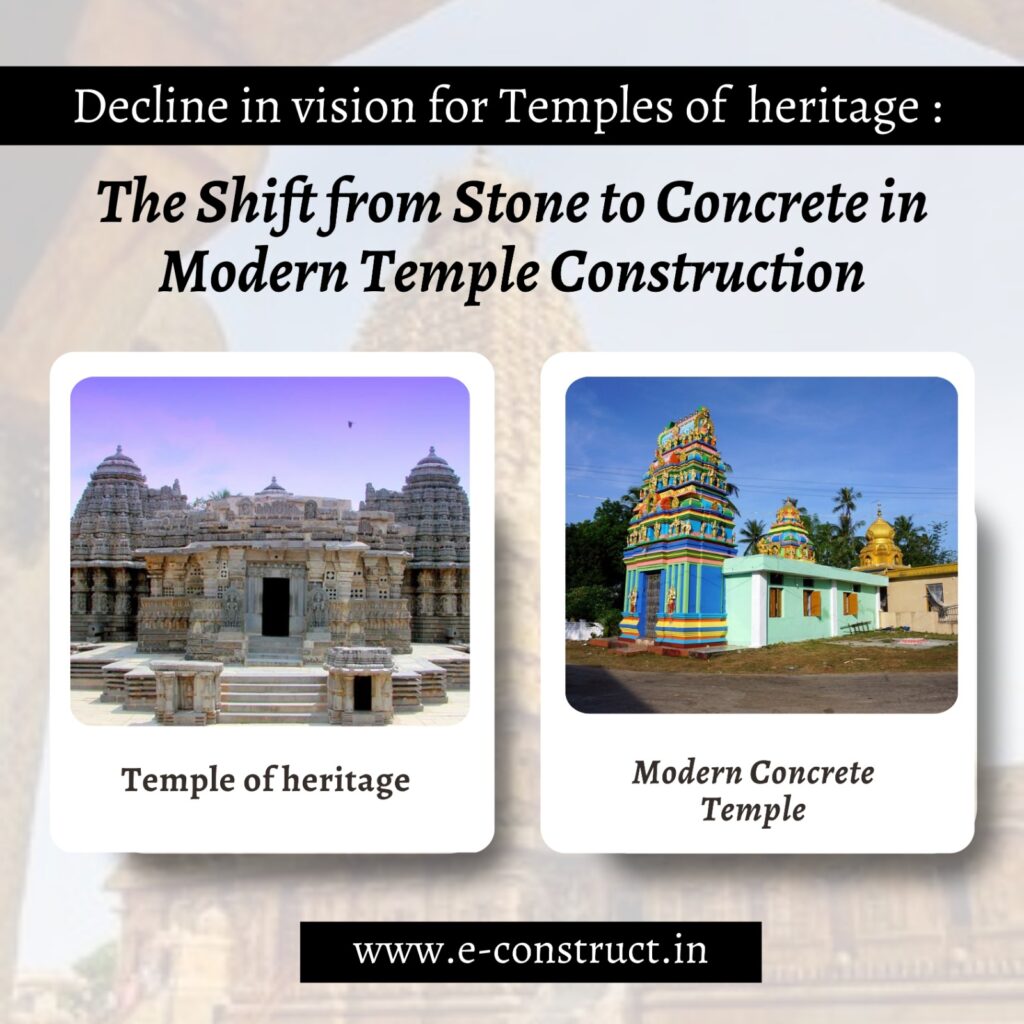Decline in vision for Temples of heritage : The Shift from Stone to Concrete in Modern Temple Construction

Old temple architecture is a testament to the ingenuity and artistry of ancient builders, characterized by intricate designs, towering gopurams, and harmonious alignment with nature. Crafted primarily from durable materials like granite, sandstone, and marble, these temples were designed to withstand the test of time.
Timeless Ingenuity: Unique Features of the Brihadeeswarar Temple and Lessons for Modern Temple Architecture
Old temple architecture is a testament to the ingenuity and artistry of ancient builders, characterized by intricate designs, towering gopurams, and harmonious alignment with nature. Crafted primarily from durable materials like granite, sandstone, and marble, these temples were designed to withstand the test of time.
Timeless Ingenuity: Unique Features of the Brihadeeswarar Temple and Lessons for Modern Temple Architecture
The Brihadeeswarar Temple exemplifies ancient Indian architectural brilliance. Its earthquake-resistant base uses interlocking stones for stability, while the towering 216-foot vimana is carved from a single 80-ton granite block. The temple’s shadowless design at noon reflects advanced geometry, and its musical pillars showcase expertise in acoustics and material resonance.
Modern Temple construction practises
Small concrete temples, while cost-effective and quick to build, often face challenges in long-term sustainability. Concrete materials can deteriorate over time due to weathering, lack of proper maintenance, and environmental factors. These structures may not offer the durability or aesthetic value of traditional stone temples. Without careful planning, such temples risk losing their cultural and spiritual significance as they age.
Heritage vs. Innovation: The Challenge of Preserving Tradition in Modern Temple Architecture"
- Ancient temple construction is a heritage of unmatched craftsmanship and durability, using stone and intricate techniques that have withstood centuries.
- In contrast, modern construction materials, while efficient, may not offer the same longevity as stone, leading to potential deterioration over time.
- The decline in demand for traditional skills has resulted in a loss of craftsmanship, and modern designs risk diluting the spiritual and cultural essence that ancient temples embodied.
- This cultural disconnect challenges the preservation of sacred traditions in contemporary temple architecture.
Conclusion:
To ensure modern temples become future heritage, it’s essential to blend traditional techniques with contemporary methods, while developing durable modern materials. Documenting traditional designs and creating adaptable spaces will preserve their cultural significance. Engaging communities in the process helps maintain the spiritual essence, ensuring these temples stand as lasting symbols of both tradition and modernity


